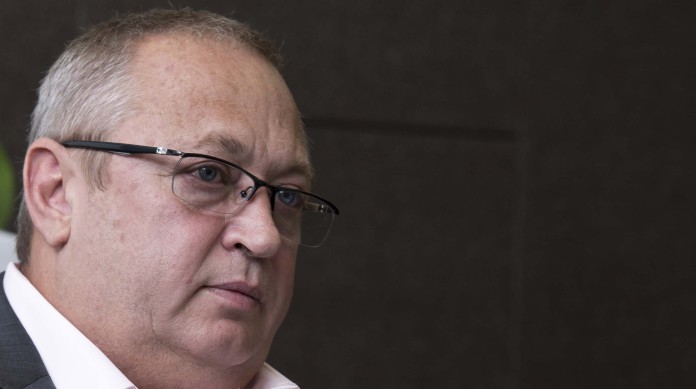
SHARES in Sibanye-Stillwater took a hammering in Johannesburg on May 7, possibly on concerns related to lost production at its west Johannesburg operation, Driefontein, a part of which would not mine gold for another two days this week.
Some 7.7% or R8.30 per share was lost which lowered Sibanye-Stillwater’s market capitalisation to R23.5bn – the same as the debt it raised in order to buy Stillwater Mining last year.
James Wellsted, head of investor relations, said he couldn’t be definitive about why investors were selling the stock, especially as the South African government’s response to the seismic activity last week – which resulted in the death of employees at Driefontein’s Masakhane mine – had been “measured”.
Sibanye-Stillwater said today that the Masakhane mine – where a seismic event measuring 2.2 on the Richter Scale occurred on May 3 killed six of 13 miners trapped underground following a fall of ground – would shut for about two days. This was in order for employees to mourn their lost colleagues. The rest of Driefontein would also close for a day this week.
Production was shut at the mine for two days last week following the accident that Wellsted said was difficult to anticipate owing to the nature of rock mechanics. “There was a seismic event measuring 2.5 on the Richter Scale on the western part of the mine. That was just before the seismic event on the eastern part of the mine more than two kilometres away where lives were lost,” he said.
Driefontein produces about 50 kilograms of gold a day of which Masakhane comprises a little less than 20% implying total production losses of 180kg to 200kg (5,760 to 6,400 ounces). This included two days of production losses this week.
Investors have expressed concern about the firm’s balance sheet. The loss of production due to the seismic event at Driefontein feeds into the concern about its ability to repay debt, and whether the firm will announce a dilutive rights issue before the end of the year. Sibanye-Stillwater said the chances of a rights issue was remote after refinancing and increasing a credit facility and amid signs of an improvement in the rand gold price.
Sibanye-Stillwater published its first quarter numbers last week shortly before the accident in which it reported a 12% quarter-on-quarter decline in production to 291,500 ounces. Coupled with a weaker average rand/dollar exchange rate – 11.96 in the quarter compared to an average of 13.63 in the December quarter – led to a hefty 62% slide in earnings before interest, tax, depreciation and amortisation (EBITDA) for the quarter to R374m for the company’s South African gold mining division.
Handily, Sibanye-Stillwater’s platinum group metal operations performed well, especially Stillwater in the US, and helped the group to a 30% year-on-year improvement in EBITDA to R1.58m whilst net debt to EBITDA was cut to 2.4x at end-March from a net debt to EBITDA ratio of 2.6x as of December 31.
The share may also be lower as investors fear regulatory action by the South African government. Its comments so far, however, have been relatively sober in nature. South African mines minister, Gwede Mantashe, has urged the company to step-up its efforts to improve safety and said the fatal rockburst should be subject to an investigation.











